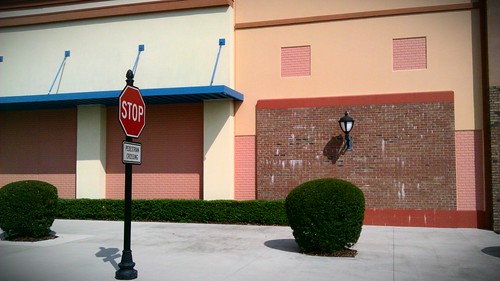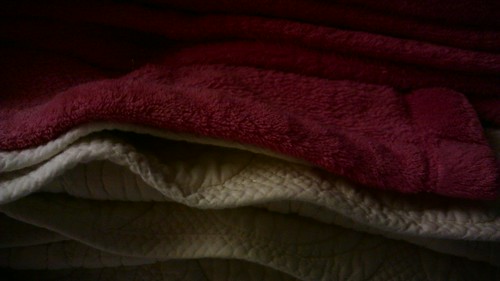Playing with the myTouch 4G Camera
 |
| Hot Stop |
Hang around the web long enough and you'll see plenty of photographs taken with the outward-facing camera built into current versions of the iPhone. You'll also see plenty of heated arguments about the 'seriousness' of photographs taken with an iPhone. Whatever. A camera is a camera. While I don't own an iPhone, my myTouch 4G comes with a 5MP camera, which I felt somewhat compelled to see what kinds of photographs I could take with it.
I've been using Olympus DSLRs since 2006. I've learned their strengths and quirks, and I've grown comfortable using each one. The myTouch 4G camera is quite different from any Olympus camera, both in operation as well as how to configure the camera to produce acceptable (to me) photographs. After working a bit with the camera, I've managed to find a range of settings that produce a reasonable base photograph with enough exposure and detail to work with.
 |
| Camera exposure settings |
There's not that much to tweak in the smartphone camera. I came up with those settings to minimize the creation of artifacts in to keep as much detail in the photograph as the camera is capable of producing.
What I also discovered is that the myTouch camera can apply what Olympus refers to as art filters in its cameras. Unlike Olympus, however, there are 12 effects that can be applied to the photograph as it's being taken; Distortion, Vignette, Depth of field, Vintage, Vintage warm, Vintage cold, Grayscale, Sepia, Negative, Solarize, Posterize, and Aqua. When I shoot I simple leave it as No effect.
 |
| An 'art filter' by any other name, applied when the photo is taken |
After the photo is taken, you can apply post-processing as well; Crop, Effects, and Rotate right or left. The Effects are Auto enhance, Cinniamon, High contrast, Sepia, Overexposed, Glimmer, Twilight, Lively, Warm, Cold, Basic frame, Bleak, Vintage, and Antique. I have limited myself to High contrast and Overexposed (B&W). I've tried to use all the art filters, but I prefer to modify a 'stock' exposure after the image is taken.
 |
| Effects are applied after the photo is taken (post-processing) |
Transferring photographs off of the myTouch is incredibly simple; simply tap the photo, select the 'Share' icon, pick the service you want to share it with, and away it goes into the 'cloud'. This beats the current process of grabbing my notebook, transferring my Olympus RAW files to Lightroom 3, performing necessary post processing, then pushing them up to Flickr. I'd say this was the future of digital photography, except this has been going on for some time now; I'm very late to this particular party.
 |
| Photograph post-processed with the high-contrast effect |
While the output of the 4G's camera won't match what the E-3 (and even the 5MP E-1) can produce, it shows where photography is headed. Photographic creativity is a lot faster with today's current crop of smartphones, allowing the creation and distribution while out in the field in front of the subject.
I've often wondered what camera I would purchase in the future. Extra megapixels would be nice, but what I'm really looking for are new, compelling features. If regular camera manufacturers ever start to directly incorporate some of the smartphone camera features into tomorrows standard cameras, then that would be a compelling reason to step up. Many cameras already have 'art filters'; what they lack is built-in connectivity to allow wireless distribution. That, and a decent screen with interface.

Comments
Post a Comment
All comments are checked. Comment SPAM will be blocked and deleted.